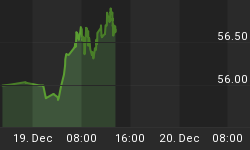The following is excerpted from a commentary originally posted at www.speculative-investor.com on 28th October 2012.
In the 1st October Weekly Update we described three signs that will likely be seen at around the time of, or just prior to, gold's ultimate price top. First, we said that by the time the ultimate top of gold's bull market is close at hand the general public will have given up on the idea that returning to economic health requires more money-printing, more government spending and more debt. The purveyors of such economic quackery will still have their fans, but they will most definitely be in the minority. Second, we reiterated the historical fact that the most important gold peaks of the past 40 years occurred well after the monetary backdrop had turned gold-bearish. We then said that as a consequence of gold's tendency to follow major changes in the monetary situation, gold probably won't reach its ultimate top until well after the Fed stops trying to 'stimulate' the economy using cheap credit and money-pumping. Third, we cited the strong tendency observed under the current monetary system for long-term bull markets to go to absurd extremes and culminate in spectacular upside blow-offs during their final 12 months.
Not one of these three signs has been evident during the past few years. Furthermore, based on the time it would take for the above-mentioned signs to appear it is reasonable to conclude that gold's ultimate price top lies a minimum of two years into the future.
We are revisiting this topic today because our 1st October commentary omitted an important indicator of a gold top. It's an indicator we've included in many TSI commentaries over the past ten years that for some unknown reason escaped our most recent discussion of what to look for when trying to determine if gold's bull market is nearing its end. We are referring to the relationship between gold and the US stock market. The relationship is illustrated below and can be expressed as follows: Secular trends in the Dow Industrials Index relative to gold go hand-in-hand with secular trends in stock market valuation (represented on the following chart by the S&P500's price-to-peak-earnings ratio, also known as the Hussman P/E). Due to this relationship, gold probably won't be close to a major peak relative to the Dow until after the SPX's Hussman P/E makes a prolonged move to single digits. To put it more succinctly, near a major gold top the US stock market will be very under-valued.
Note that the relationship between gold and the stock market isn't just a coincidence. It stems from gold being the world's most durable, transportable and widely accepted store of value. As other investments fall out of favour (as indicated, for example, by a long-term downward trend in the US stock market's P/E ratio) there is an increase in demand for the store-of-value function that gold has provided with great success for thousands of years.

Chart Source: The bottom section of the chart (the SPX P/E) is from www.decisionpoint.com. The top section is our creation.
The US stock market is not remotely close to being under-valued at this time. Therefore, the link between gold and the US stock market's valuation is sending the same signal as the other indicators of a major gold top, which is that a major gold top is probably still years away.
We aren't offering a free trial subscription at this time, but free samples of our work (excerpts from our regular commentaries) can be viewed at: http://www.speculative-investor.com/new/freesamples.html















